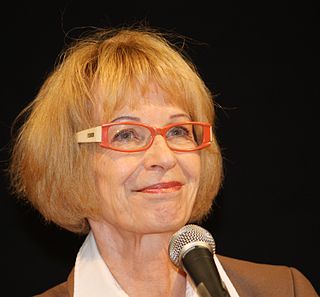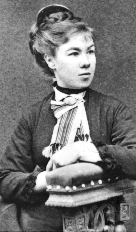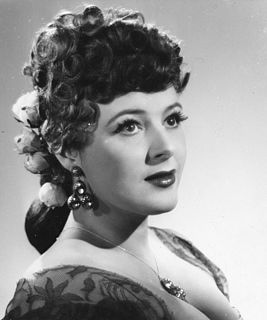
Tarja Kaarina Halonen is a Finnish politician who served as the 11th President of Finland, and the first woman to hold the position, from 2000 to 2012. She first rose to prominence as a lawyer with the Central Organisation of Finnish Trade Unions (SAK), and as the Prime Minister's parliamentary secretary (1974–1975) and a member of the City Council of Helsinki (1977–1996). Halonen was a Social Democratic Party member of parliament from 1979 until her election to the presidency in 2000. She also served as a minister at the Ministry of Social Affairs and Health from 1987 to 1990, as Minister of Justice from 1990 to 1991, and as Minister for Foreign Affairs from 1995 to 2000.

Baron Carl Gustaf Emil Mannerheim was a Finnish military leader and statesman. He served as the military leader of the Whites in the Finnish Civil War of 1918, as Regent of Finland (1918–1919), as commander-in-chief of Finland's defence forces during the period of World War II (1939–1945), as Marshal of Finland (1942–), and as the sixth president of Finland (1944–1946).

Erkki Sakari Tuomioja is a Finnish politician and a member of the Finnish Parliament. From 2000 to 2007 and 2011 to 2015, he served as the Minister for Foreign Affairs. He was President of the Nordic Council in 2008.

Helena Sofia (Helene) Schjerfbeck was a Finnish painter. A modernist painter, she is known for her realist works and self-portraits, and also for her landscapes and still lifes. Throughout her long life, her work changed dramatically beginning with French-influenced realism and plein air painting. It gradually evolved towards portraits and still life paintings. At the beginning of her career she often produced historical paintings, such as the Wounded Warrior in the Snow (1880), At the Door of Linköping Jail in 1600 (1882) and The Death of Wilhelm von Schwerin (1886). Historical paintings were usually the realm of male painters, as was the experimentation with modern influences and French radical naturalism. As a result, her works produced mostly in the 1880s did not receive a favourable reception until later in her life.
Her work starts with a dazzlingly skilled, somewhat melancholic version of late-19th-century academic realism…it ends with distilled, nearly abstract images in which pure paint and cryptic description are held in perfect balance.

Minna Canth was a Finnish writer and social activist. Canth began to write while managing her family draper's shop and living as a widow raising seven children. Her work addresses issues of women's rights, particularly in the context of a prevailing culture she considered antithetical to permitting expression and realization of women's aspirations. The Worker's Wife and The Pastor's Family are her best known plays, but the play Anna Liisa is the most adapted to the films and operas. In her time, she became a controversial figure, due to the asynchrony between her ideas and those of her time, and in part due to her strong advocacy for her point of view.
Human rights in Finland are freedom of speech, religion, association, and assembly as upheld in law and in practice. Individuals are guaranteed basic rights under the constitution, by legislative acts, and in treaties relating to human rights ratified by the Finnish government. The constitution provides for an independent judiciary.

Kaari Marjatta Utrio is a Finnish writer. She has written over 35 historical novels and 13 non-fiction books on historical topics. She is a historian, holding the degree of Master of Arts from the University of Helsinki, and has retired from the position of Professor in service of the Finnish State Commission of Fine Arts.

Vaskilintu is a 1992 historical novel by Finnish author Kaari Utrio. It is set in 11th century Europe. Vaskilintu and Tuulihaukka (1995) are considered to be Utrio's most important works.

Uhritulet is a 1993 historical novel by Finnish author Kaari Utrio. It is set in 14th century Finland. According to journalist Suvi Kerttula, Vaskilintu (1992), Tuulihaukka (1995) and Uhritulet are Utrio's most important works.

Ruma kreivitär is a 2002 historical novel by Finnish author Kaari Utrio telling a story of poor aristocrats and richening middle-class in the 1830s Finland.

Saippuaprinsessa is a 2004 historical novel by Finnish author Kaari Utrio focusing on the frivolities of the high society in Helsinki, the capital of Grand Duchy of Finland in the 1830s.

Presidential elections were held in Finland in January and February 2012. The first round took place on 22 January 2012 with advance voting between 11 and 17 January. Since no candidate received a majority of the vote, a second round was held on 5 February, with advance voting between 25 and 31 January. Sauli Niinistö was elected the President of Finland for a term from 1 March 2012 until 2018.
Sadan miekan mies, direct translation "man of a hundred swords", is a Finnish historical adventure comedy movie from 1951 directed by Ilmari Unhola. The movie takes place in the 1630s in the Finnish county Varsinais-Suomi, and tells the story of a heroic swordsman on an assignment from the king. On their journey the swordsman and he's partner encounter foes and damsels. The movie was first televised on 7.3.1964.

Jukka Torsten Lindholm, also known as Michael Maria Pentholm and currently Michael Penttilä, is a Finnish serial killer. According to Alibi, he is the only Finn that fits FBI's description of a serial killer.
In December 2018, it transpired that adult men, all of whom had arrived in Finland as asylum seekers or refugees, were grooming, and raping and otherwise sexually abusing, girls under 15 years of age in Oulu, Finland. One victim ended up committing suicide. The Oulu Police Department warned young girls and parents, while emphasizing that "not all people with foreign backgrounds are dishonest or criminals."

Pietari (Petter) Mikonpoika Hannikainen, surname changed to Hanén during his early years of studying until 1852, was a Finnish writer, journalist and surveyor, and a member of the Hannikainen family of writers and musicians.

Irja Ketonen was a Finnish media executive, whose life and career has been described as 'the Cinderella story of the Finnish media sector'. She was the first woman to be granted Finland's highest civilian honorary title of Vuorineuvos.

Ina Lange, also known by her noms de plumeDaniel Sten and Daniel Stern, was a Finnish writer, music historian, pianist and music instructor.

Maaria Eira was a Finnish operatic soprano and film actress noted for her coloratura voice and stage presence.

Hellin Helena Tynell was a notable Finnish glass designer who has been described as a pioneer of Finnish glass art.

















